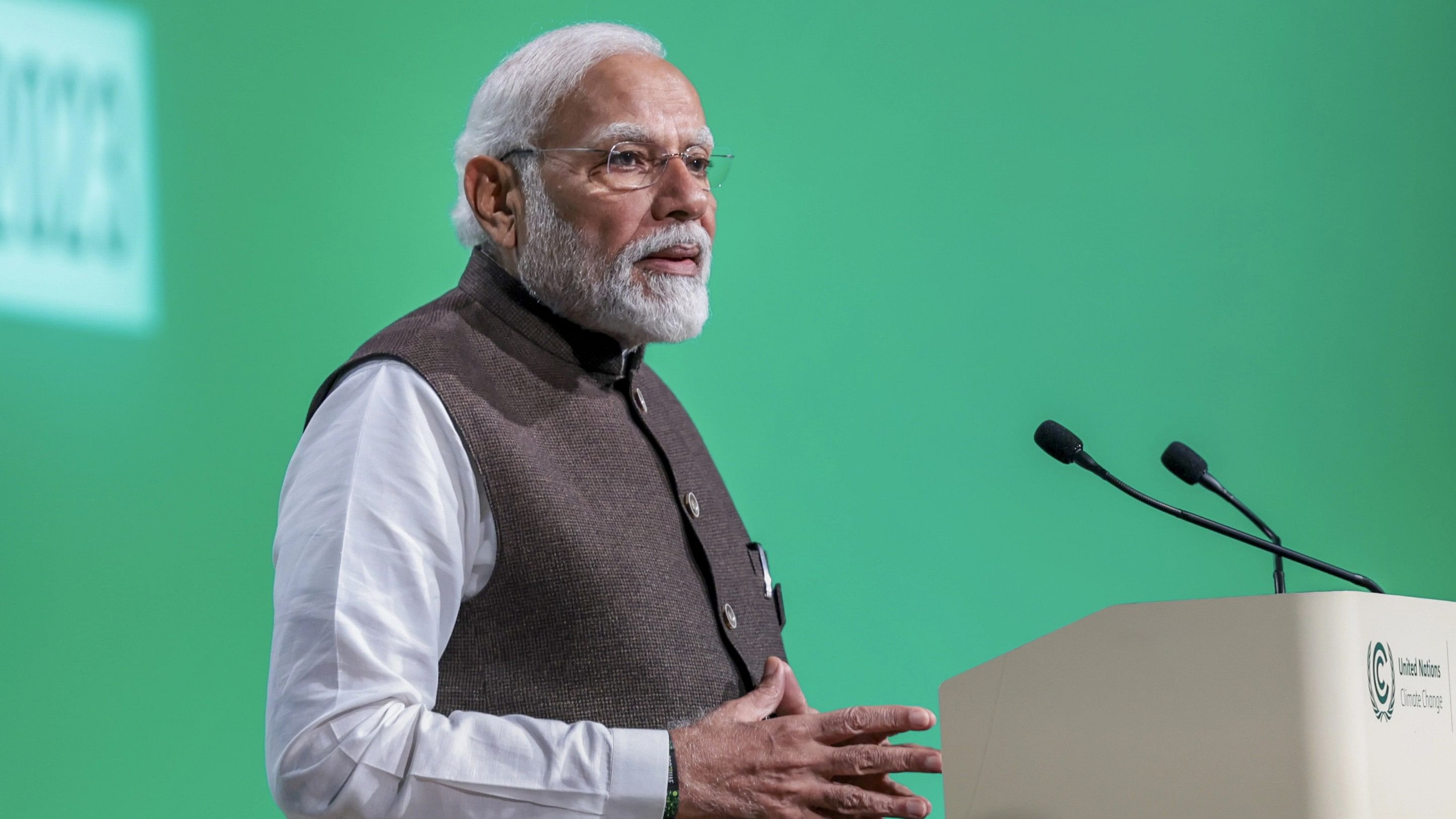
File Photo: Prime Minister Narendra Modi speaks during the opening of a high-level segment for Heads of States at the COP28, in Dubai.
Credit: PTI Photo
It is December, and it is time for the global climate change convention, the Conference of Parties (COP). Much is being written about climate change and the convention in Dubai. The government of India consistently showcases its initiatives and commitments at each COP meeting to show India as a global leader. In the past, India has announced initiatives such as the International Solar Alliance, LiFE (Lifestyle for Environment), the Coalition for Disaster Resilient Infrastructure, and now the Green Climate Initiative. The Indian PM announced the launch of the Green Climate Initiative or Programme at the inaugural session of the COP-28 in Dubai.
The Green Credit Programme (GCP), notified by the government of India on October 13, 2023, is an innovative market-based mechanism. Designed to incentivize voluntary environmental actions across diverse sectors, the GCP involves various stakeholders like individuals, farmers, communities, private sector industries, and companies. The Indian Council of Forestry Research and Education (ICFRE), based in Dehradun, serves as the GCP Administrator, responsible for programme implementation, management, monitoring, and operation. Initially, the GCP focuses on water conservation and afforestation. The ICFRE, alongside experts, is developing the Green Credit Registry and trading platforms to facilitate the registration, buying, and selling of green credits. To obtain green credits, individuals and entities must register their activities through the central government’s dedicated app/website (www.moefcc-gcp.in). The administrator verifies activities through a designated agency, with self-verification for small projects. Once verified, the administrator issues a tradeable green credit certificate.
The GCP includes numerous activities, such as:
i) Tree Plantation-based Green Credit: To promote activities for increasing the green cover across India through tree plantations and related activities.
ii) Water-based Green Credit: To promote water conservation, water harvesting, and water use efficiency, including wastewater treatment and reuse.
iii) Sustainable agriculture-based green credit: To promote natural and regenerative agricultural practices and land restoration to improve productivity, soil health, and the nutritional value of food produced.
iv) Waste management-based green credit: To promote sustainable and improved practices for waste management, including collection, segregation, and treatment.
v) Air pollution reduction-based green credit: To promote measures for reducing air pollution and other pollution abatement activities.
vi) Mangrove conservation and restoration-based green credit: To promote measures for conservation and restoration of mangroves.
vii) Ecomark-based green credit: To encourage manufacturers to obtain Ecomark labels for their goods and services.
vii) Sustainable building and infrastructure-based green credit.
Though multiple environment-related activities are included, the main driver for the GCP is likely to be the potential for generating carbon credits that will accrue from afforestation, agro-forestry, and various tree planting programmes on farmlands, institutional lands, land owned by industries, etc.
Operationalization of GCP on a large scale requires the establishment of institutional arrangements, for which the government has selected the Indian Council of Forestry Research and Education (ICFRE) as the nodal agency, with a steering committee and a technical committee. Successful implementation requires developing a rigorous methodology to measure, verify, and report environmental benefits. Often, the methodologies will become complex, posing challenges for small organisations, farmer’s cooperatives, small institutions, and industries. If the methodology is made too simple, ineffective projects with no significant environmental benefit will go through. Many agencies and consulting firms will emerge, making profits for themselves at the expense of farmers. The activities may or may not lead to real, measurable environmental benefits, particularly carbon sequestration benefits, contributing to the mitigation of climate change.
GCP is a market-based mechanism, which means there must be demand for the green credits, such as tonnes of carbon sequestered through tree planting. More importantly, there must be an attractive price for the green carbon credits generated by, say, farmers. If the price is not attractive, the whole programme will collapse. Farmers and communities will lose interest. Generally, industry or corporations that buy the bulk of the potential carbon credits may not be enthusiastic about uncertain carbon credits flowing from small farms distributed over large areas. Further, there is a risk of ‘Permanence’ of carbon credits, which means that an individual or a farmer may cut the trees after getting payment for the carbon credit, or the trees may be burned in a fire or attacked by pests, or the trees may not grow at the rate required, given the degraded or poor fertility status of soils and erratic rainfall. So the success of the GCP depends on many factors, and we may have to wait and watch. If successfully implemented, millions of farmers and individuals will benefit and enable their participation in the global effort to address climate change, with multiple benefits to local communities, agriculture, biodiversity, water supply, and so on.
It is important to recognise that initiatives such as GCP will indeed play a minor role in addressing the global climate change challenge. According to the IPCC (Intergovernmental Panel on Climate Change), there is a need to reduce carbon dioxide emissions by nearly 50% by 2030, while currently the emissions are increasing. This will require a large-scale transformational change in how energy is produced, transmitted, and utilized. According to all available assessments, the world will not be able to achieve the scale of CO2 emission reduction required to achieve the Paris Agreement target of stabilising global warming at 1.5 degrees C. The world is on its way to becoming warmer by 2.7 to 3 degrees C above the pre-industrial level. Thus, in a large country such as India, where millions of rural and urban communities are vulnerable to climate change hazards such as droughts, floods, heat waves, and hurricanes, the only option seems to be to build resilience in communities, agriculture, water management, health systems, etc.
(Ravindranath is an IPCC author and a retired professor at the IISc)